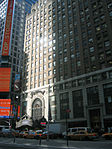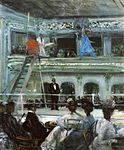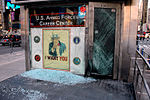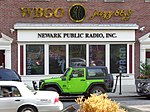Pabst Hotel
1899 establishments in New York City1902 disestablishments in New York (state)Buildings and structures demolished in 1902Defunct hotels in ManhattanDemolished buildings and structures in Manhattan ... and 6 more
Demolished hotels in New York CityHotels established in 1899Pabst Brewing CompanySkyscraper hotels in ManhattanTimes Square buildingsUse mdy dates from August 2019

The Pabst Hotel occupied the north side of 42nd Street in Manhattan, New York City, between 7th Avenue and Broadway, in Longacre Square, from 1899 to 1902. It was demolished to make room for the new headquarters of The New York Times, for which Longacre Square was renamed Times Square. To the Pabst Brewing Company, the hotel and its restaurants were part of a nationwide program for promoting its beer. This facility, however, conflicted not only with the Times, but also with plans for New York's new subway system.
Excerpt from the Wikipedia article Pabst Hotel (License: CC BY-SA 3.0, Authors, Images).Pabst Hotel
Broadway, New York Manhattan
Geographical coordinates (GPS) Address Nearby Places Show on map
Geographical coordinates (GPS)
| Latitude | Longitude |
|---|---|
| N 40.756388888889 ° | E -73.986388888889 ° |
Address
42nd Street–Times Square–Port Authority Bus Terminal
Broadway
10019 New York, Manhattan
New York, United States
Open on Google Maps








